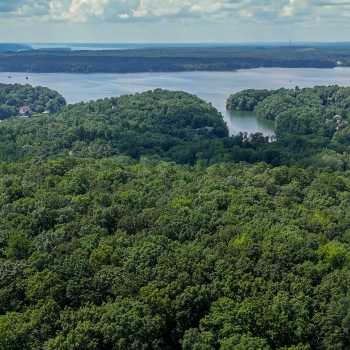Why Campbell County Tennessee Land Attracts Buyers
Land buyers in Campbell County often seek the quiet backroads, wooded hollows, and lake views that define this part of East Tennessee. It's one of the few places where you can fish for trophy stripers in Norris Lake in the morning and be deep in elk country by afternoon. Recreational tracts near Royal Blue and Sundquist WMA are popular for ATV riders, hunters, and off-grid cabin owners alike.
Farms in this county are usually smaller and family-operated, with beef cattle on hill pasture, home gardens, and a few head of livestock. The terrain supports limited row crops, but hay, silage, and pasture dominate agricultural use. Many properties include streams, springs, and second-growth timber. Buyers with interest in land that blends seclusion, recreation, and mountain heritage find Campbell County a strong match.
Campbell County Natural Land Features and Outdoor Appeal
Land in Campbell County includes a mix of wooded slopes, creek drainages, and ridgetop views. It lies within the Cumberland Mountains and shares its border with the North Cumberland Wildlife Management Area, a major natural draw for landowners seeking outdoor use. Norris Lake stretches into the county’s eastern edge, with deep coves and bluffs offering rare lakeview parcels. The diversity of land types makes it appealing for hunting, hiking, or weekend retreats.
Norris Lake Shorelines
Norris Lake reaches into southeast Campbell County, offering deep clear water and over 800 miles of shoreline. Properties near the lake provide boating, fishing, and scenic potential.
Cumberland Escarpment Ridges
The western edge of the county climbs into the Cumberland Mountains. These ridges provide elevated views, dense hardwoods, and remote access for recreational buyers.
Royal Blue WMA Borders
Many parcels sit adjacent to the Royal Blue Unit of the North Cumberland WMA. These areas offer unmatched hunting and ATV trail access directly from private land.
Beef, Timber, and Recreation Land in Campbell County
Most working farms in Campbell County focus on cow-calf operations using native grass pastures and local hay. Row crops are rare due to terrain but some silage and specialty produce exists. Timberland and hunting tracts dominate acreage, especially in the north and west. Buyers often seek mixed-use land—small farms with deer woods, or timberland with creekfront camping sites. The county also supports niche use such as goat farming, poultry for eggs, or seasonal vegetable plots.

Timber Investment
Many hillsides and remote tracts in Campbell County are covered in second-growth hardwoods, including oak, hickory, and poplar. These lands offer long-term timber value and habitat for game species. Timber buyers often favor properties with mixed stands and access to public roads or trails for harvest.
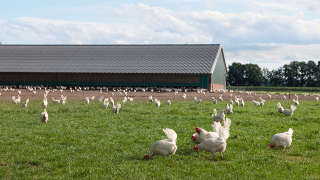
Poultry and Homestead Use
Small poultry flocks are found throughout the county, especially on homesteads and back-to-the-land properties. Many raise laying hens or meat birds for local sale or personal use. While not a major industry, poultry can add year-round income to mixed-use acreage and is ideal for buyers seeking low-overhead farming.
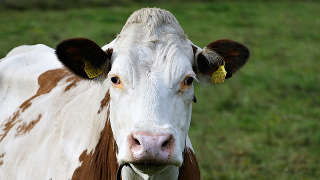
Beef and Grazing Land
Pastureland supports dozens of small cow-calf operations across the county. Open fields are typically located in stream bottoms or reclaimed hillsides. Buyers interested in beef production or land with steady grazing use will find established fencing, barns, and water access on many rural parcels.
Hunting, Elk Sightings, and Fishing Land in Campbell County
Campbell County supports diverse wildlife thanks to its proximity to protected land and varied elevation. The North Cumberland WMA supports hunting for bear, turkey, and deer, but it's also one of the few places in Tennessee where elk sightings are possible. The area includes habitat for reptiles, songbirds, and game fish. Streamfront parcels or wooded tracts near the WMA are especially valuable to buyers seeking long-term recreational use or habitat management.
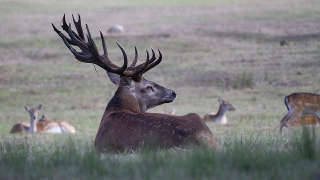
Elk
Tennessee's elk restoration zone includes Campbell County. Elk are often spotted in the Sundquist Unit and open reclaimed mine land. A limited permit hunt is offered by lottery.
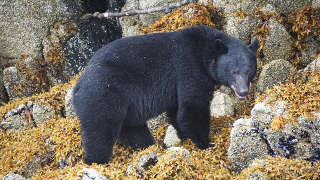
Black Bear
Black bear activity is increasing in the county, especially near Royal Blue. Proper land management and food storage help maintain healthy bear populations.
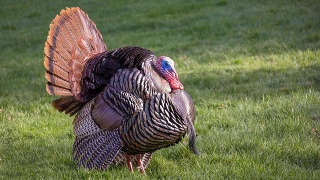
Wild Turkey
The county produces strong turkey numbers, with birds found throughout wooded creek corridors and old logging roads. Spring hunting is productive and popular.
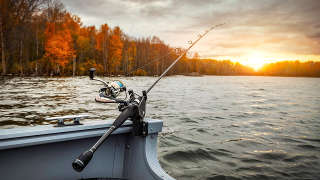
Fishing
Norris Lake is a premier fishery for striped bass, walleye, and crappie. The Clinch River below Norris Dam supports trout year-round. Many tracts offer private stream access.
Land Near the Cumberland Trail and Heritage Roads
Campbell County is one of the few places in East Tennessee where buyers can own land bordering the Cumberland Trail State Park. The trail cuts through the county, following high ridges with panoramic views and old logging roads. Landowners often maintain access trails or offer parking for hikers in exchange for conservation easements or simple good will. The area also features portions of the White Lightning Trail, a scenic byway that connects Appalachian music, moonshine, and history. For buyers interested in legacy property, this mix of heritage and landscape is hard to match.
Land for Sale in Nearby East Tennessee Counties
Campbell County borders several other East Tennessee counties with strong land values and similar appeal. These neighboring areas offer their own mix of agriculture, recreation, and mountain culture. Buyers often compare tracts across counties to find the right price, access, and use potential.
Anderson County
South of Campbell, Anderson County features land near Norris Dam and Oak Ridge. Farmland and wooded tracts are popular among local buyers.
Scott County
Northwest of Campbell, Scott County has extensive timber tracts and borders Big South Fork National River. It draws buyers seeking isolation and hunting.
Claiborne County
To the east, Claiborne County offers lakeview land, pasture, and hollows. It's known for its music heritage and farms along the Powell River valley.

